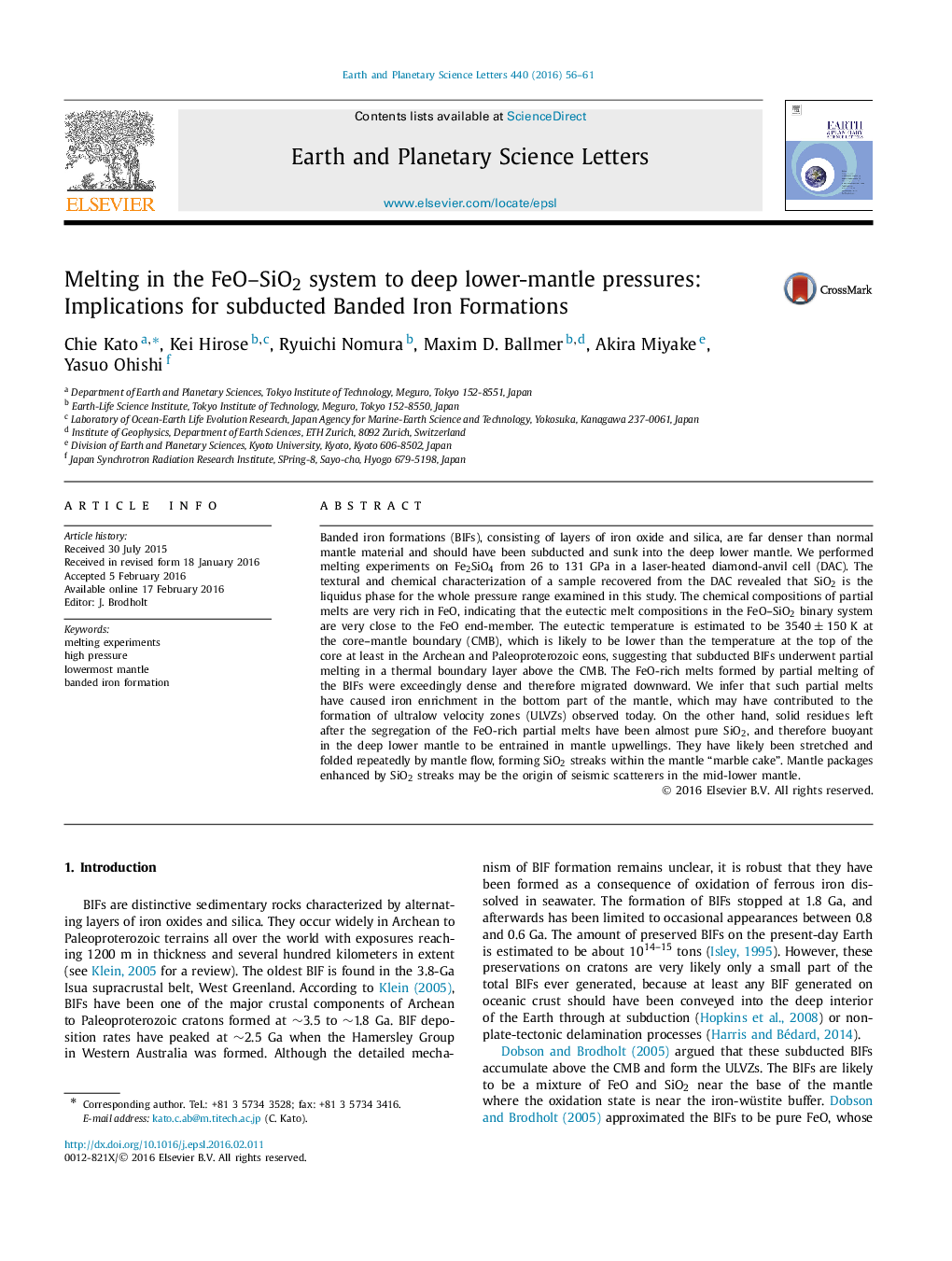| کد مقاله | کد نشریه | سال انتشار | مقاله انگلیسی | نسخه تمام متن |
|---|---|---|---|---|
| 6427587 | 1634716 | 2016 | 6 صفحه PDF | دانلود رایگان |

- We conducted high pressure melting experiments on Fe2SiO4 at lower mantle pressures.
- The eutectic composition was very close to FeO-endmember and liquidus phase was SiO2.
- Subducted banded iron formations (BIFs) partially melted at the lowermost mantle.
- FeO-rich BIF melts contributed to the formation of ULVZs.
- SiO2-rich residue contributed to seismic wave scattering in the mid-lower mantle.
Banded iron formations (BIFs), consisting of layers of iron oxide and silica, are far denser than normal mantle material and should have been subducted and sunk into the deep lower mantle. We performed melting experiments on Fe2SiO4 from 26 to 131 GPa in a laser-heated diamond-anvil cell (DAC). The textural and chemical characterization of a sample recovered from the DAC revealed that SiO2 is the liquidus phase for the whole pressure range examined in this study. The chemical compositions of partial melts are very rich in FeO, indicating that the eutectic melt compositions in the FeOSiO2 binary system are very close to the FeO end-member. The eutectic temperature is estimated to be 3540±150 K at the core-mantle boundary (CMB), which is likely to be lower than the temperature at the top of the core at least in the Archean and Paleoproterozoic eons, suggesting that subducted BIFs underwent partial melting in a thermal boundary layer above the CMB. The FeO-rich melts formed by partial melting of the BIFs were exceedingly dense and therefore migrated downward. We infer that such partial melts have caused iron enrichment in the bottom part of the mantle, which may have contributed to the formation of ultralow velocity zones (ULVZs) observed today. On the other hand, solid residues left after the segregation of the FeO-rich partial melts have been almost pure SiO2, and therefore buoyant in the deep lower mantle to be entrained in mantle upwellings. They have likely been stretched and folded repeatedly by mantle flow, forming SiO2 streaks within the mantle “marble cake”. Mantle packages enhanced by SiO2 streaks may be the origin of seismic scatterers in the mid-lower mantle.
Journal: Earth and Planetary Science Letters - Volume 440, 15 April 2016, Pages 56-61